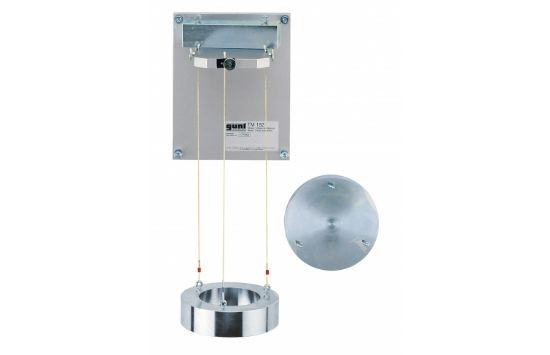In a bifilar suspension, the pendulum body is suspended over two threads. The pendulum body oscillates in a plane purely translationally without rotation. This kind of pendulum can be considered as a mathematical pendulum. In a trifilar suspension with three threads, the pendulum body is set in a torsional vibration. The torsional vibration can be used to determine the moment of inertia by experiment.
The TM 162 unit can be used to study pendulum swings with bifilar or trifilar suspension. A beam, a cylinder or a circular ring are used as pendulum bodies. The length of the threads can be adjusted using clamping devices. The moments of inertia of the pendulum body can be calculated from the measured oscillation period. The oscillation period can be varied by changing the thread length.
The experimental unit is designed to be fixed to a wall.

